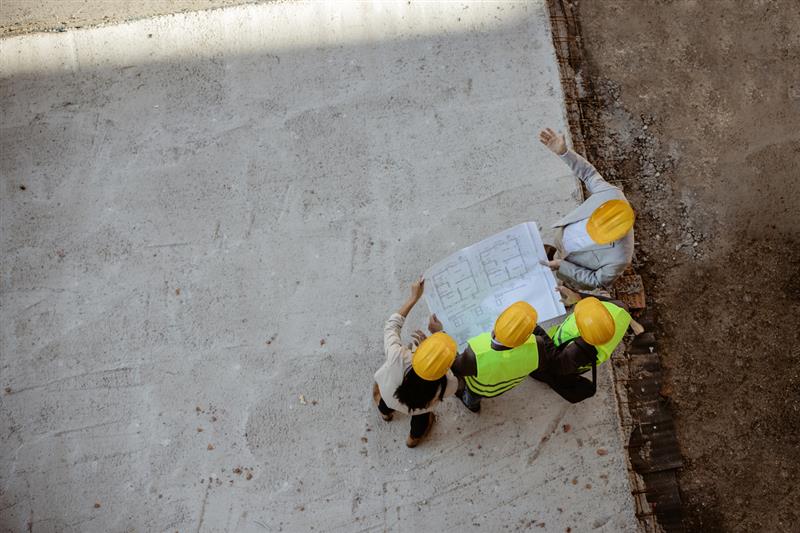What recent land policy changes could mean for SME developers

New land policy changes in the UK.
Developer’s hold onto your hard hats for this one.
There have been a series of recent development-focused policy updates, all set to have notable implications for small and medium-sized developers. To help you navigate the changes, stay informed about challenges, and make the most of new opportunities, we’ve collated some of the key takeaways into helpful explainers below.
The good news is, much of the updates are aimed at streamlining processes and revealing development potential - especially if you’re working on those smaller home schemes or unlocking brownfield sites.
We know it’s not all smooth slabs and strong brews, so we’ve laid out the what’s changed, what it really means for SME developers - and how to act on it now.
The emergence of “medium‑site” planning tiers
In May 2025, the Government released a Planning Reform Working Paper: Reforming Site Thresholds. It proposes splitting planning applications into three sizes:
- Minor: Under 10 homes
- Medium: 10–49 homes (NEW)
- Major: 50+ homes (gov.uk)
This new “medium site” tier could be a genuine unlock for SME builders, who for years have been caught in a “one size fits all" system. Less bureaucracy, more proportionate demands, and an emphasis on delegation to officers rather than potentially slow-moving committees? These updates seem to be paving the way for streamlined processes and more pragmatic decision making.
Our take? It’s a promising step. But execution matters - local authorities need the resourcing and clarity to deliver these streamlined pathways.
To learn more, check out our recent post: The future of grey belt land: planning and sustainability changes , which dives into how grey/brownfield strategies intersect with tiered planning.
Less ‘red tape’ for Biodiversity Net Gain (BNG)?
BNG, a 10% biodiversity uplift, is currently mandatory for most developments, but it hasn’t landed evenly. There are some indications that smaller developers may have struggled with the metric’s technical and financial requirements, especially on urban or brownfield sites. The May 2025 consultation proposes:
- BNG exemptions or simplified rules for single dwellings and small sites
- A revised metric to make applying for BNG easier
- Streamlining for brownfield and grey-belt developments
(gov.uk)
Our take: Biodiversity Net Gain (BNG) is a bold, forward-thinking policy that places nature at the heart of planning priorities - an approach we have always supported. However, its implementation has presented challenges, particularly for smaller developers. Some of the proposed updates may help to ease these pressures, especially for those working on urban or brownfield sites. Regardless of the consultation’s outcome, we believe that greater transparency and ongoing support will be crucial to BNG’s long-term success. We encourage developers to make use of available tools, such as Joe’s Blooms’ online calculator, to ensure they are well-equipped to meet requirements.
You can read more on BNG’s implementation so far in our full report: Biodiversity Net Gain: The Story So Far.
Faster decisions: streamlining committee processes
Proposed changes to the way applications are processed include:
- Delegated authority for minor and medium-site applications
- National service standards for planning response times
- Reduced need for planning committees on smaller schemes
These changes aim to unblock the pipeline for the kinds of projects SMEs typically lead - local, low-rise, and often on trickier sites that major developers overlook.
Our take: Efforts to reduce unnecessary delays are always welcome, and we acknowledge that committee processes can have time-consuming or even potential roadblocks to progress. The government has reaffirmed the importance of meaningful local engagement in every project, while also recognising that aspects current procedures may benefit from greater efficiency. These proposed changes have the potential to support SMEs by creating a more level playing field - enabling them to bring forward high-quality developments in a timelier and streamlined manner.
Brownfield and grey belt land in focus
The updated National Planning Policy Framework (NPPF) includes support for developing on ‘grey belt’ sites - areas within green belt boundaries that don’t strongly serve green belt purposes. This is a subtle but powerful policy shift that could open new supply in well-connected locations.
For SME developers, who often lack the scale to compete on open market land bids, this represents a key opportunity.
Explore our land-source strategies in: The future of grey belt land: planning and sustainability changes.
Access to finance and land for SME developers
New and updated support for SME developers includes:
- Home Building Fund: loans for SME-led builds (gov.uk)
- Homes England land schemes: reserved for smaller firms (gov.uk)
- Small Sites Aggregator pilots: active in Bristol, Sheffield, Lewisham (gov.uk)
- A future £16bn National Housing Bank for small developers (gov.uk)
What these changes could mean for SME developers
- Tiered thresholds - faster, cheaper planning for 10 - 49 home schemes
- Committee reform - officer-led processes, meaning less time spent at committee
- Grey belt opportunities - more accessible, viable land in well-connected areas
- Finance and land support - Dedicated funding and pilot schemes tailored to SME needs
Our land team
If you'd like to discuss land opportunities, or learn more about our Land Finding Service - speak to a land expert.





